
The first time I came by the term “control layer” was in a 2010 Building Science Corporation article called “The Perfect Wall,” written by the firm’s principal, Joseph Lstiburek. In Lstiburek’s perfect wall, all the control layers are on the exterior side of the framing, creating a durable assembly. But this is rarely the way walls are built—most homes have insulation inside the wall cavities, and many have an interior vapor retarder of some sort.
Regardless of the controls’ locations, to design and build a durable, comfortable, and efficient home, you must consider how you are going to manage water, air, vapor, and temperature. These are the four primary control layers in a building envelope, which separates the indoor conditioned space of a home from the outdoors.
Starting with water, I’ll describe each control layer, it’s purpose, the materials that are commonly used to create it, and what the 2018 International Residential Code (IRC) has to say about it. To keep this introduction to a reasonable length, we’ll look at the control layers of only wood-framed wall assemblies, and the prescriptive codes that guide their design and construction. As you’re reading, though, keep in mind that slabs and roofs need control layers too. That is one of the neat ideas of Lstiburek’s Perfect Wall: lying down, it makes the perfect slab; tilted, it makes the perfect roof.
The water control layer is the most important
The first control layer is for bulk water or liquid water, redundant terms used to make a clear distinction between water and water vapor, which is the third control. Architect Steve Baczek told me that water is the first and most important control, followed in order by air, vapor, and temperature. Baczek is not the only professional who expressed…
Weekly Newsletter
Get building science and energy efficiency advice, plus special offers, in your inbox.

This article is only available to GBA Prime Members
Sign up for a free trial and get instant access to this article as well as GBA’s complete library of premium articles and construction details.
Start Free TrialAlready a member? Log in
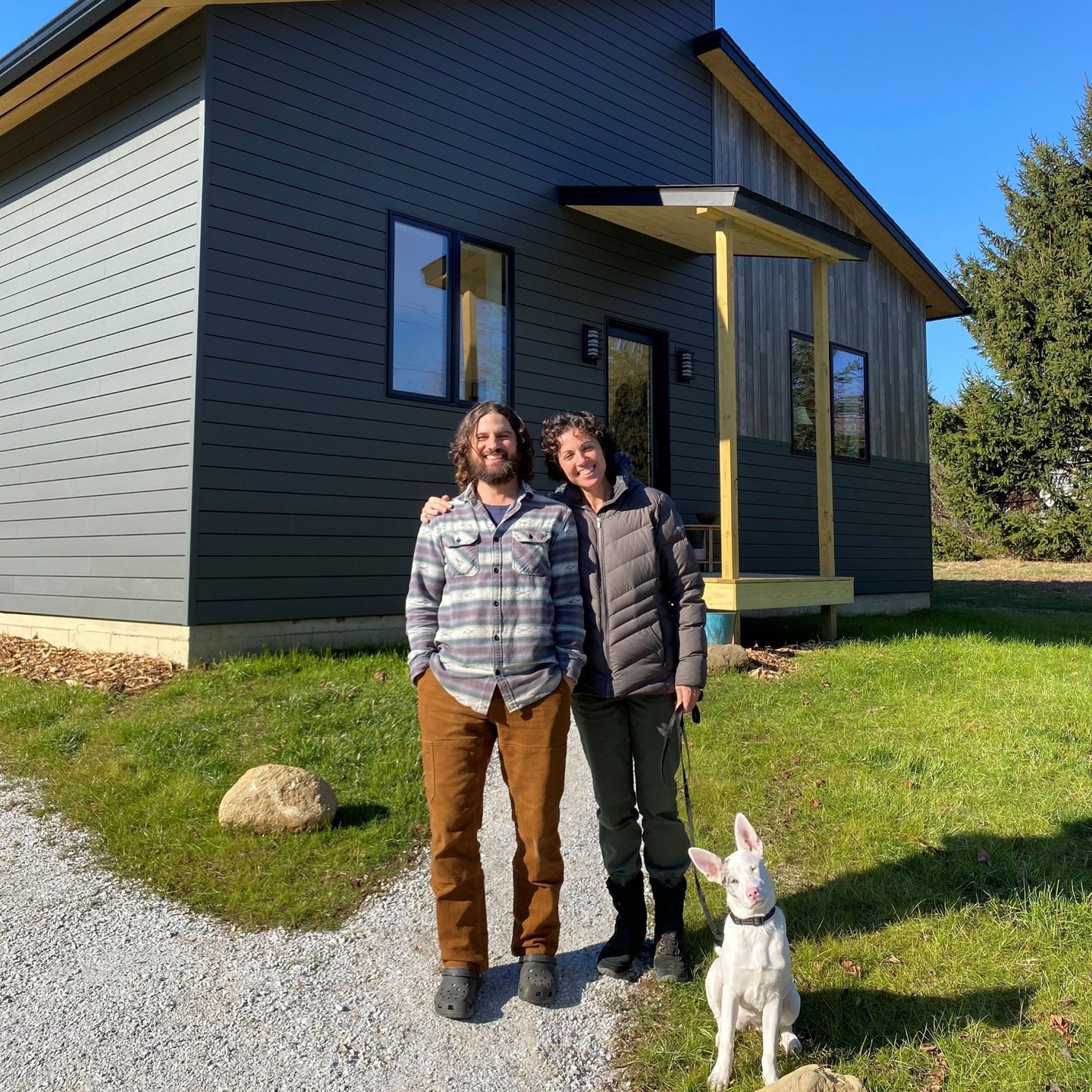




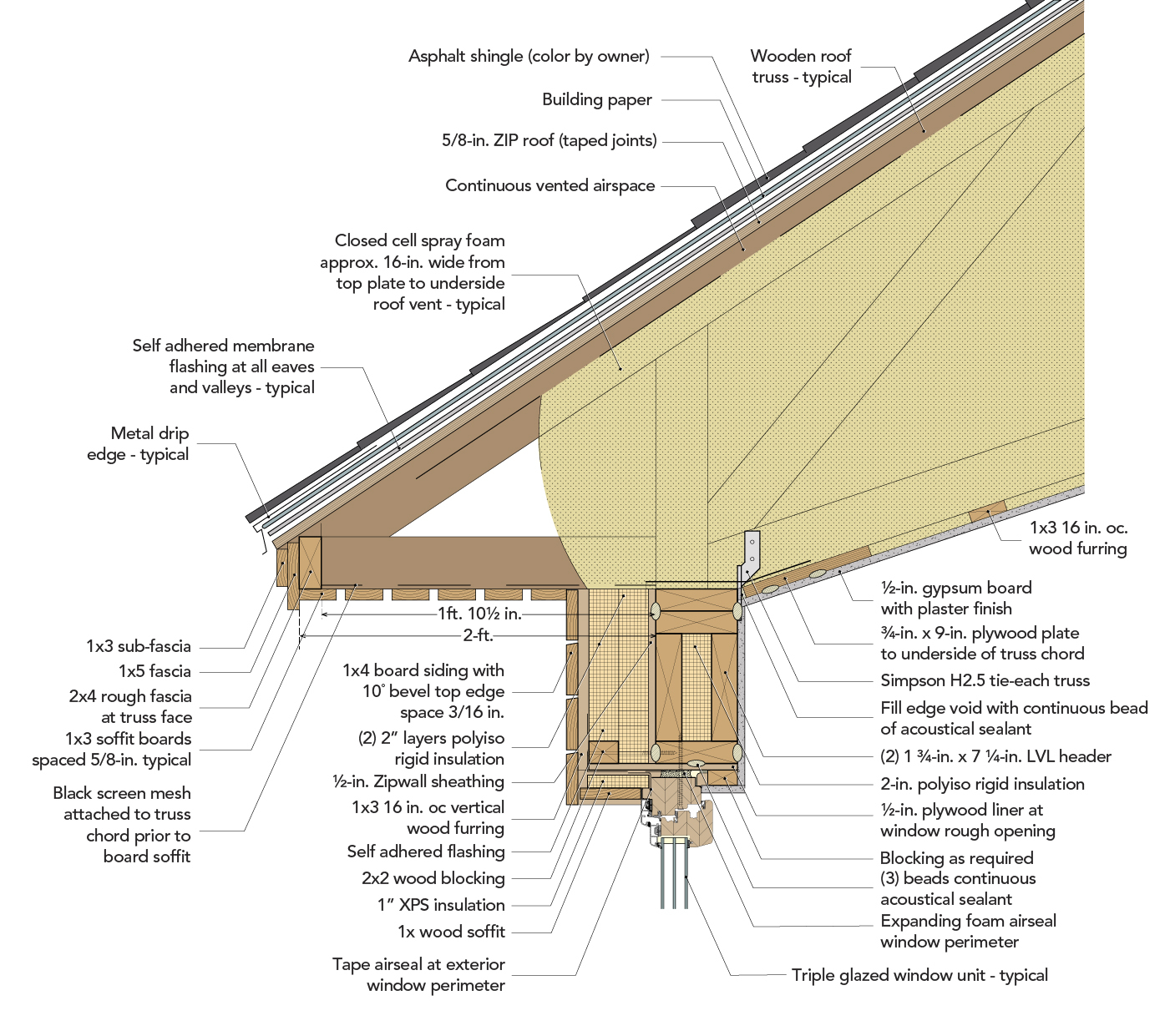
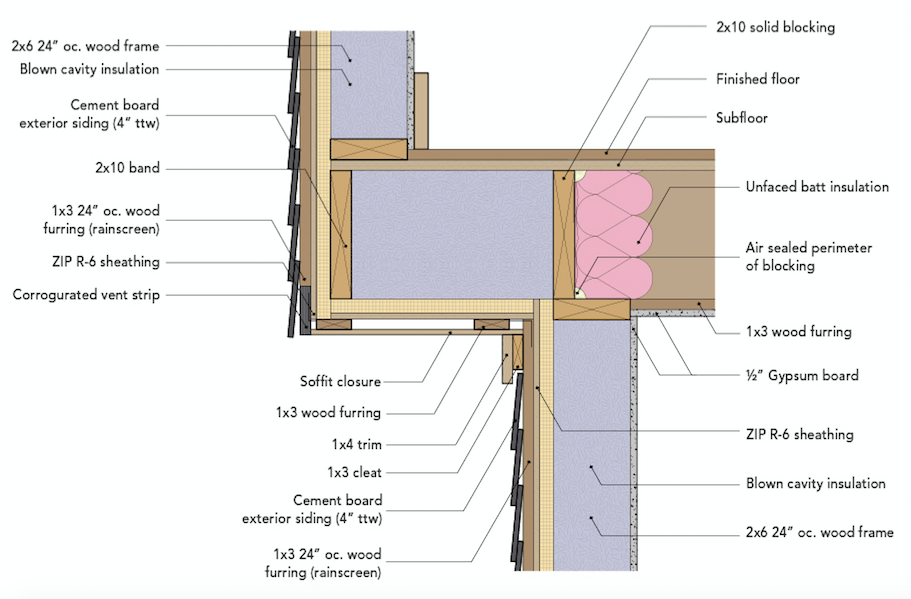
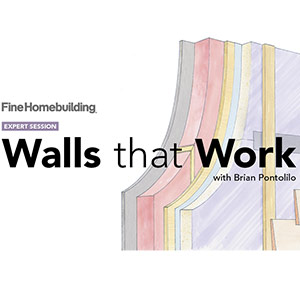
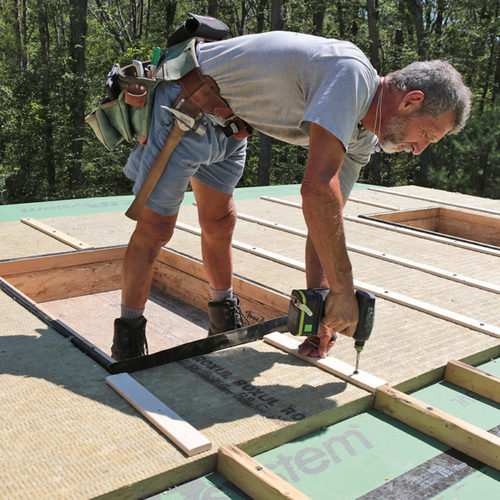






22 Comments
I have always been concerned about a wall in a cold climate drying primarily to the warm side, against the flow of heat.
Doug,
If you install an adequately thick layer of rigid foam on the exterior side of the wall sheathing, the sheathing and fibrous insulation will never get wet -- so there won't be any accumulated moisture to dry out. Moisture accumulation happens on cold surfaces, not warm surfaces -- and the exterior rigid foam keeps the wall materials warm and dry.
Virtually every new home built in the Twin Cities is 2x6 construction, R-21 fiberglass with OSB sheathing. No one is using foam sheathing here. Where are they building in the USA using the method you describe?
Doug,
I assumed that your worries about "a wall in a cold climate drying primarily to the warm side" referred to a wall with exterior foam. If a house has OSB sheathing, ordinary housewrap, and almost any common type of siding, then that type of wall -- the type of wall that you say can be found at "virtually every new home built in the Twin Cities" -- can dry to the exterior.
Foam sheathing keeps getting brought into the discussion as a way to build a safe wall. No one is using foam sheathing, certainly not the production builders, they fought like lions against the R-5 continuous provision here. We need to discuss building methods that builders are actually using.
Doug,
If you don't want to discuss or consider foam sheathing because "no one is using foam sheathing" -- I believe you, by the way, because your observation is true for many areas in the U.S. -- then why did you write, in your first comment, that "I have always been concerned about a wall in a cold climate drying primarily to the warm side"? Which type of wall are talking about? It seems that all of the walls in your area dry primarily to the exterior, not the interior.
Doug, many builders around the country are using continuous exterior insulation, and for places using or transitioning to the IRC building code, it's required in cold climates (in the newer versions, or equivalent assemblies). Even poor, rural states require it--Vermont does, and Maine will soon. Progressive builders are often moving beyond foam to more sustainable products that do allow drying in both directions. If you don't believe me, get on Instagram and follow Steven Baczek, Matt Risinger and other building science experts with big followings and you'll find a whole new world. You in particular should follow @northernbuiltpro--he's a builder in northern Minnesota doing some creative but practical high performance work, and he is launching a building science discussion group for sharing knowledge.
The methods builders are actually using where you are, are outdated and are not relevant on a website devoted to better ways of building.
Edit to add: I heard about the Vermont rule from an architect friend; I have not researched it myself. I would be surprised if they don't also allow a U-factor alternative, as does the IRC: https://publicservice.vermont.gov/energy_efficiency/rbes.
I'm not sure when Maine is upgrading to newer energy codes. I was thinking it was next year, but may have been confused with the fact that starting July 1, 2020, all of Maine will be required to meet the state code (MUBEC) and not just towns over 4,000 people, which is the current requirement. MUBEC uses the 2015 IRC but the 2009 IECC, which does not require exterior insulation.
Minnesota is in the process of adopting the 2018 IRC code, which looks like it will pass with one big change, they will not be adopting the energy code. The state code writers did the same with the 2012 code, which is the code currently in force in Minnesota. It appears that the there will be little or no change in the energy code from the past version. No requirement for exterior insulation. A strong push back from builders about the cost of construction is, I believe, the biggest reason.
Doug's comment about inward drying during the winter months, right now most builders in my area are still using polyethylene sheeting as the air/vapor control layer. (I'm working to change that thinking but the argument always comes back to cost.) The poly, which our insulators have become very good at installing, is the main reason I see blower door test results around 2ACH50. The problem becomes no inward drying. The addition of foam insulation with poly has the potential to be a problem. If you're planning on foam, the building better be air tight and move to a class II or III vapor control layer. No poly. I'm a big fan of VOAT, vapor open, air tight. Our current project has Rockwool ComfortBoard 80 on the exterior and Intello on the interior, drying both inward and outward with a blower door number of 1ACH50. The problem has now become finding a heat source small enough (20,000 BTU's) to meet the heating needs of the home, for a home in climate zone 7.
Thanks Michael for the shout-out.
For the record, in the middle of Michigan where I'm at quite a few builders (not everyone) are using 1" foam on the exterior. Habitat for Humanity uses 2" with vinyl siding, no furring needed. They put it over a 2x6 wall 24 on center full of cellulose but fiberglass would be fine. I know pretty good house would like to see R-40 but at a nominal R-30 this wall goes together exactly like a 13+5 and it's a heck of a wall.
I kind of thought the purpose of this site was to discuss building methods that builders *should* be using? I know in Northern Michigan these thick exterior foam walls are becoming common in retrofits. Can't speak to new construction. But the benefits are clear. I can understand the resistance though - thick exterior foam is a pain.
>"For this reason, he prefers plywood over OSB sheathing. Though both are class III vapor retarders when dry, plywood becomes more permeable when it gets wet, he said. For an interior vapor retarder, Klein recommends a variable perm, so-called “smart” vapor retarder."
That should read "... both are class II vapor retarders when dry...", since they both run between 0.7-1 perms when measured in a dry-cup test at low relative humidity. When the proximate air is at 50% RH and higher they edge into the Class-III zone, but plywood quickly becomes more vapor open than OSB at ever higher RH:
https://s3.amazonaws.com/greenbuildingadvisor.s3.tauntoncloud.com/app/uploads/2018/08/08005228/bsi-038-mind-the-gap-permeance-of-plywood-and-osb.jpg
That characteristic makes both OSB & plywood smart vapor retarders, and can be used as a interior side or intermediate vapor retarder in high-R assemblies, a fairly common approach in PassiveHouse designs.
Good catch Dana.
Plywood and OSB can be classified as either class II or class III vapor retarders, depending on the type of testing done and will perform as either class II or class III vapor retarders depending on weather and indoor conditions. I will clarify the article.
Oliver's point remains, and I have heard this from other professional as well, that they prefer plywood for its ability to dry, and to stand up to wetting and drying cycles, better than OSB. I have only anecdotal and pseudo-scientific evidence (backyard testing) that this is true, but it is a common sentiment among many building professionals.
That assessment would be borne out by the Building Science Corporation graph linked to in my post. When the RH inside the cavity or exterior is 75% the plywood has more than 50% more drying capacity than OSB.
Deleted
Yes. I was referring to the second commonly held opinion that plywood holds together better than OSB over time and varying conditions when I said I had only "anecdotal and pseudo-scientific evidence (backyard testing)."
Great article, Brian! This will be a great reference for builders and enthusiast.
As I read the section on insulation, I began to wonder how many high performance builders are having their projects delayed due to code officials proclaiming that their insulation design does not meet code?
For instance, a PERSIST style home- with no cavity insulation (all on the exterior) would not appear to meet the requirements stated above. Also, I wonder if some officials are declaring the I -joists as Larsen trusses are not technically "continuous" insulation?
That's always a good reminder. When we publish articles like this and use the current IRC as "the code," it actually applies to little of the country. However, it would be impossible to speak to everyone's local codes so we can use it as a common denominator, and maybe an idea of where local codes are headed.
It's not uncommon to hear two opposing things from builders, those whose efforts to build better are stymied by code officials who won't accept their assemblies, and those who feel the codes are overreaching. The best thing we can do is to cultivate healthy, respectful working relationships with code officials so that we're learning from each other. I know that was Glenn Mathewson's feelings when we spoke for this article.
Thanks to all for providing construction details for homes in your area. I think in our quest to offer something new and shiny we often overlook traditional building methods that have worked over many years albeit with poor energy performance. I am a traditionalist for cold climate construction with the idea we need to build thicker and tighter.
I have used exterior foam sheathing on some projects as many as 40 years ago with success both from a longevity and energy standpoint. An R-30 wall in the southern 1/2 of MN is easy to build with an R-10 continuous and would be a good benchmark for performance.
Can you guys provide these articles in a printable PDF form? Printing the webpage loses all of the images in the article. I am trying to explain this stuff to my reluctant architect and builder and I need the pictures to make it real simple.
Buy them a subscription, if they read it there, get curious and follow all the links, then you save yourself a lot of time. If they don't ... it was great donation.
Hi Christopher.
A version of this will appear in the next issue of Fine Homebuilding magazine and you will be able to download a pfd from finehomebuilding.com once it is published.
I am a builder with 5.5 years of full time experience and 30 years of "knocking around" the building industry in some capacity. I live in climate zone 5 and have spent the last year reading, listening and learning as much as I can.
I am fully convinced that building the way we have "always built" or the way Twin City builders are building as @Doug McEvers points out, is the wrong way to go. All of us have a responsibility to future owners, these buildings we touch and most of all future generations, to do the right thing. To me, this is not a matter of debate. I am extremely appreciative of people like those here at GBA for paving the way by advocating, teaching and sharing your knowledge. I am constantly reading, listening and watching to see what I can learn next.
I feel like I'm drinking from a firehose and it's pretty damn refreshing. Keep up the good work. @ Doug McEvers, it's up to guys like you and me to get on board and be the next layer in the pyramid.
Log in or become a member to post a comment.
Sign up Log in